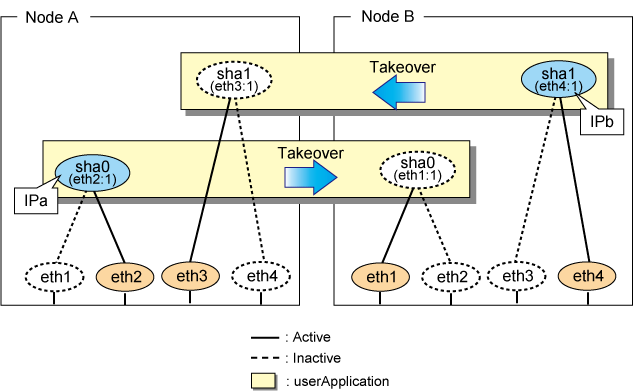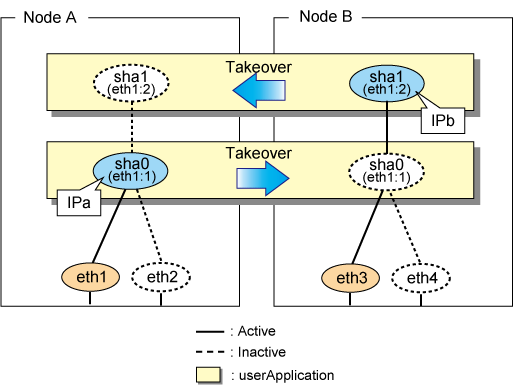A mutual standby operation can be achieved by defining several virtual interfaces and by configuring each resource as a separate userApplication.
Starting process is equivalent to the active standby operation, except that the mutual standby operation contains various userApplications. For more information, see "5.4.2.1 Starting".
Usually, userApplication communicates with the remote system using the virtual interface on each node. If a failure (such as panic, hang-up, or transfer path failure) occurs on the operating node, the virtual interface comprised in that corresponding node is passed over to the standby node. With an application allowing reconnection, it takes over the connection of the operating node.
Figure 5.24 Mutual standby configuration diagram in NIC switching mode (NIC non-sharing) shows the mutual standby configuration diagram in NIC switching mode (NIC non-sharing). The takeover of an address, etc. is performed in the same way as for the active standby configuration. For more information, see "5.4.2.2 Switching".
Figure 5.24 Mutual standby configuration diagram in NIC switching mode (NIC non-sharing)

Figure 5.25 Mutual standby configuration diagram in NIC switching mode (NIC sharing) shows the mutual standby configuration diagram in NIC switching mode (NIC sharing). The takeover of an address, etc. is performed in the same way as for the active standby configuration. For more information, see "5.4.2.2 Switching".
Figure 5.25 Mutual standby configuration diagram in NIC switching mode (NIC sharing)

The fail-back is performed in the same way as for the active standby configuration. For details, see "5.4.1.3 Fail-back".
Stopping operation is equivalent to active standby connection. For details, see "5.4.2.4 Stopping".